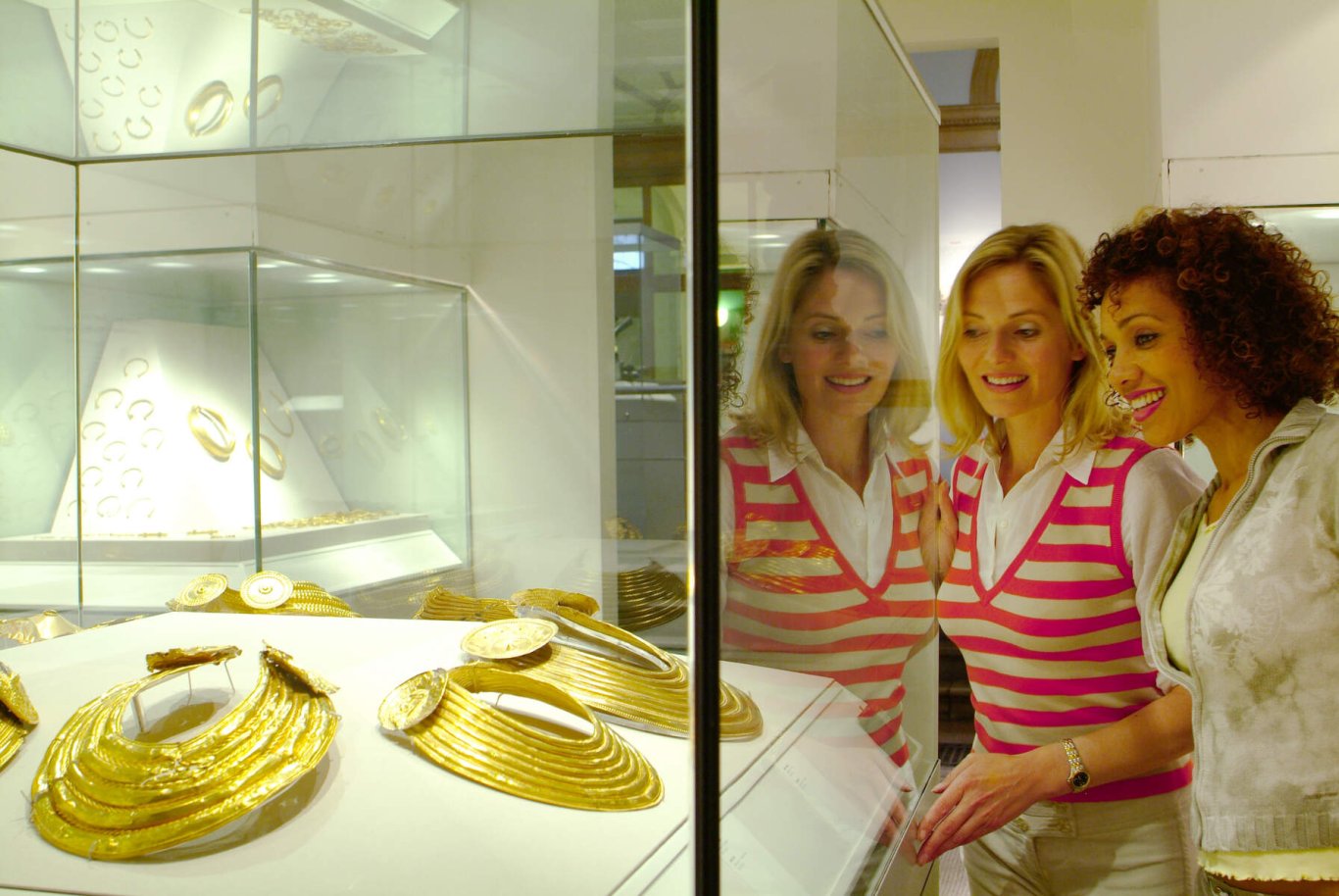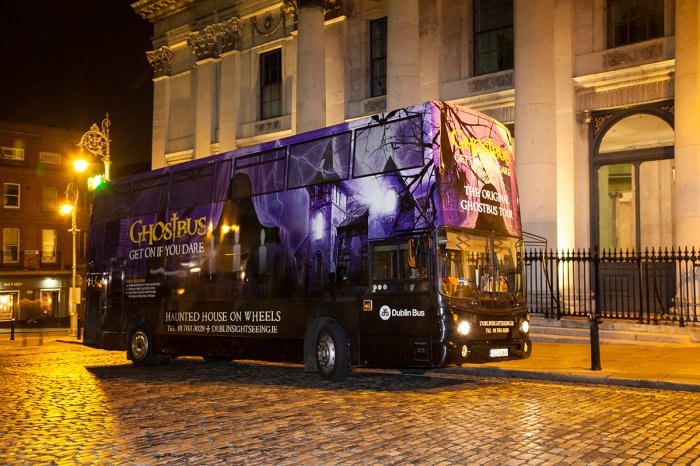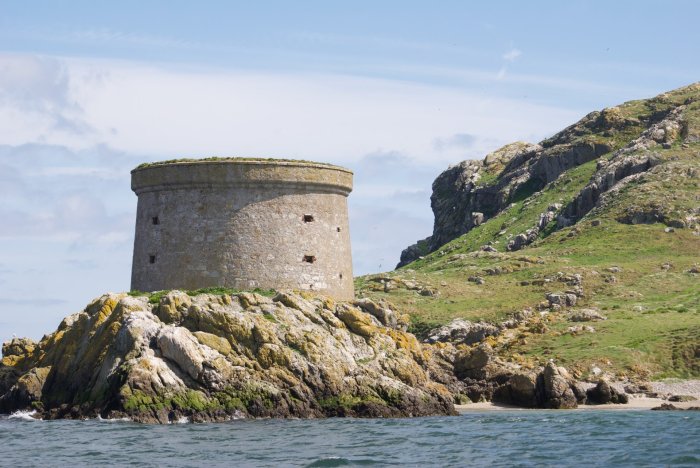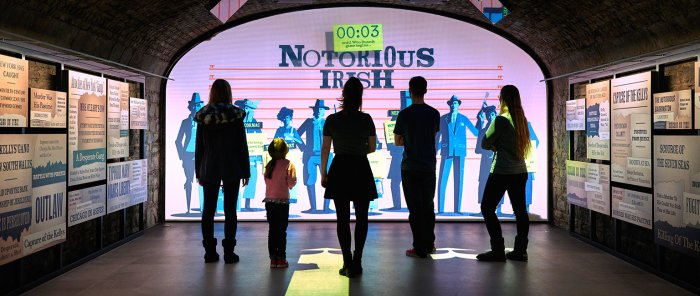Músaem Seandálaíochta na hÉireann
Tugann Músaem Náisiúnta na Seandálaíochta siar go dtí 7,000RC thú. Is féidir leat go leor déantán a fháil amach ar nós míreanna Meánaoiseacha agus Lochlannacha agus saothar ealaíne ó aimsir na gCeilteach agus na Meánaoiseanna araon.
- Tá Músaem Seandálaíochta na hÉireann saor in aisce do chuairteoirí uile
- Oscailte 1pm-5pm Dé Luain & Dé Domhnaigh
- Oscailte 10am-5pm Dé Máirt, Dé Céadaoin, Dé Sathairn
- Oscailte 10am-8pm Déardaoin
- Speisialtóireacht aige i seandachtaí Éireannacha agus seandachtaí eile a théann siar go dtí an Mheánaois go dtí an Chlochaois.
- Is é an bealach is fearr chun na nithe is díol spéise go léir ar fud na cathrach a fheiceáil ná an Turas Bus Hop-on Hop-off.
Músaem Seandálaíochta na hÉireann
Tá Músaem Seandálaíochta na hÉireann suite ar Shráid Chill Dara, nach bhfuil ach 4 nóiméad siúil ó Ghailearaí Náisiúnta na hÉireann .
Tá foirgneamh an mhúsaeim féin curtha i gcomparáid le Músaem Atles i mBeirlín, a dhear Karl Schinkel sna 1980idí, toisc gur tógadh é i stíl Palladian Victeoiriach. Ag bealach isteach an fhoirgnimh tá colúin déanta as marmar a baineadh i gcairéil i gcontaetha ar nós Chorcaí, Chill Chainnigh, na Gaillimhe, Luimnigh agus Ard Mhacha. Tá na colúin seo taobh istigh den rud ar a dtugtar an rotunda atá cruinneach agus a ardaíonn go dtí airde 20 méadar. Dhear beirt ailtire, Thomas Newenham Deane agus a mhac Thomas Manly Deane, a bhí beirt as Corcaigh, foirgneamh bunaidh an mhúsaeim.
Taispeántais
An Éigipt Ársa
Fuair an músaem sciar de na déantáin a thángthas orthu le linn tochailtí de chuid Chiste Taiscéalaíochta na hÉigipte, lena n-áirítear na suíomhanna Hieraconpolis, Ehnasya, Deir el-Bahri, Riqqa, Oxyrhynchus agus Tarkhan.
Tá cás cartáin órphéinteáilte an mhúmaí Tentdinebu, a bhfuil dáta leis ón 22ú Ríshliocht timpeall 945-716 RC air, ar cheann de na réada is tábhachtaí sa taispeántas. Is é atá sa mhúmaí seo ná buachaill óg agus buachaill a deirtear a bheith as Hawara, a bhfuil dáta leis ón gcéad/dara haois AD. Tá thart ar thrí mhíle réad sa bhailiúchán Éigipteach agus rinneadh formhór na dtochailtí idir na 1890idí agus na 1920idí.
Ór na hÉireann
I Luath-Chré-Umhaois, rinneadh na táirgí óir as leatháin óir agus áiríodh leis seo lunulae, coiléir óir corránacha agus dioscaí gréine. Tá obair óir réamhstairiúil i mbailiúchán an mhúsaeim agus is as an am idir 2200 RC agus 500 RC a thagann cuid den obair óir. Níl feidhm bheacht cuid den obair óir ar eolas ach is píosaí seodra iad formhór acu. Le linn 1200 RC, bhí réimse torcs ann a rinneadh trí bharraí nó stiallacha óir a chasadh agus ba theicnící nua oibre óir iad seo a forbraíodh. Timpeall 900 RC, a bhí i ndeireadh na Cré-Umhaoise, agus ba é seo an tréimhse inar rinneadh bráisléid agus dúntóirí gúna.

Éire Mheánaoiseach
Tá trí ghailearaí éagsúla san áireamh sa taispeántas seo, Cumhacht, Obair agus Paidir, a léiríonn go bunúsach an chaoi a raibh an tsochaí in Éirinn na meánaoiseanna nuair a bhí sí roinnte idir uaisle, gnáthdhaoine agus cléir. Scrúdaíonn an taispeántas na cineálacha éagsúla cleachtas talmhaíochta. Bhí trádáil allmhairithe in Éirinn ag an am an-mhór agus is féidir leat a fheiceáil ó thochailtí na ceardaíocht agus na tionscail éagsúla a bhí ag feidhmiú i mbailte. Taispeánann sé rogha breá de scrínte leabhar, scrínte cloig agus bachall agus dhírigh siad seo ar chleachtadh reiligiúnach agus ar dheabhóid. Taispeánann gailearaí na Cumhachta cé a rialaigh an tsochaí mheánaoiseach agus áireoidh sé taispeántas breá de chlaímhte agus tuaghanna déanacha na meánaoiseanna a léireodh cén fáth a raibh cogaíocht mheánaoiseach na hÉireann chomh uathúil. Taispeánann gailearaí na hUrnaí formhór na scrínte agus na gcumhdaigh mheánaoiseacha Éireannacha atá fágtha a raibh baint acu den chuid is mó le naoimh Éireannacha. Ar deireadh, i ngailearaí na hOibre, díríodh seo ar an tsochaí neamh-uasal agus ar uirlisí agus táirgí ceardaíochta agus trádála meánaoiseacha, tuaithe agus uirbeacha araon.
Tá go leor taispeántas eile ann, ina measc Taispeántas Lochlannach, Éire Réamhstairiúil, Criadóireacht agus Gloine ó Chipir ársa agus Ríogaíocht agus Íobairt.
Conas dul ann agus nithe is díol spéise eile saor in aisce!
- Cuirfidh an Turas Hop-on Hop-off thú ar Shráid Nassau atá díreach in aice le Músaem Seandálaíochta na hÉireann.
- Chomh maith leis sin ar Shráid Nassau tá an Leabharlann Náisiúnta agus Coláiste na Tríonóide áit a bhfuil Leabhar Cheanannais suite.
- I gCearnóg Mhuirfean Uachtarach tá Músaem na Staire Dúlra agus Teach Laighean.
- Tá an Músaem Beag i bhFaiche Stiofáin agus trasna an bhóthair (saor in aisce le Ticéad Hop-on Hop-off )
- Ag Cnoc Chorcaí atá Leabharlann Chester Beatty i gCaisleán Bhaile Átha Cliath
- Tá IMMA, Músaem na hEalaíne Nua-Aimseartha, san Ospidéal Ríoga.
- Ar Ché Sarsfield atá Músaem na nEalaíon Maisiúla agus na Staire i nDún Collins .
Make sure you visit the splendid Victorian toilets!


